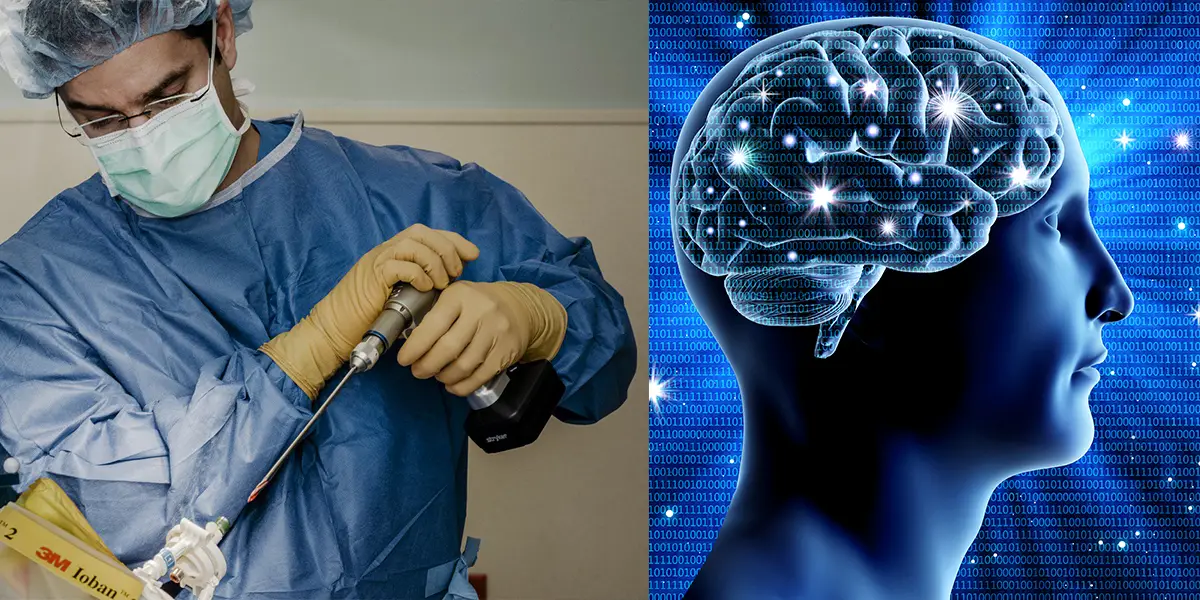This Surgeon Wants To Connect Your Brain To The Internet
Tags: opinion

Movies like Blade Runner 2049 tend to make the future of technology look dystopic. As storytellers, we have progressed from looking at only flying cars in the future to also thinking of biological changes like replicants. However, according to Eric C. Leuthardt, a neurosurgeon at Washington University, we’ve failed to think about one very important aspect – neural prosthetics.
This is a concept that Leuthardt has explored extensively in his novel RedDevil 4 in which the vast majority of our race has decided to get a brain implant that connects them to each other and to their computers. He sees this happening in the near future, more so because his speciality is operations for patients with intractable epilepsy. Prior to the surgery, they need to have electrode implants in their cortex so that computers can record the neural patterns that lead to seizures. Over a decade ago, Leuthardt decided to use the time that the patients spent on bed rest to experiment on them with their permission.
After giving them certain actions to perform, Leuthardt would study their neural signals to understand whether the way in which the brain codes these ideas can also be extended to controlling external devices. While he wasn’t able to find all the answers, the results were convincing enough to make Leuthardt firmly believe that the next stage of human evolution will be done using brain implants.
There are also others who staunchly follow this theory. It was only last year that Elon Musk started Neuralink, a project focusing on integrating mind and matter. Even Zuckerberg is working on a software that can translate thoughts into text. But all these projects are only just getting started and they’ve all been kept heavily under wraps. These machines will need to be powerful enough to compute the enormous amounts of data that the brain can process in a second and human beings are yet to understand the actual code behind its functioning.
Understanding Our Minds
This movement began way back in the 1980s when Apostolos Georgopoulos, an engineer at John Hopkins discovered the neurons that fire just before we perform a specific action. He was able to predict bodily movements in monkeys by recording these signals. His protégé, Andrew Schartz took it a step further in the next decade by implanting electrodes into a monkey’s brain and proving that they could be trained to move robotic limbs using only their thoughts.
Leuthardt took inspiration from these projects for his own work. By working on patients who already had electrodes implanted in them to treat epilepsy, he was able to progress swiftly and soon enough, his patients were able to play games like Space Invaders by moving the controls with their thoughts.
And then in 2006, Gerwin Schalk who had worked on these experiments with Leuthardt got an exciting offer from Elmar Schmeisser from the U.S. Army Research Officer. Schmeisser’s dream was to create a headpiece that could decode a soldier’s thoughts and send them to another soldier’s own device. For this Schalk turned to Leuthardt who asked his patients to vocalize and then think of simple words before sending their data to Schalk.
By analyzing this information, Schalk could see the areas in the motor cortex which were activated when the words were spoken out loud. The auditory cortex was also activated at the same time. These patterns only showed a slight difference when the patients just thought of the words. Basically, they’ve found the source of that tiny voice we all have at the backs of our minds. As their work has progressed, they’ve focused on trying to decode more complicated speech patterns.
Into The Future
Now Leuthardt is focused on making us ready for the changes that are to come. Given enough funds, he is confident that he can make a neural prosthetic which would enable users to control a computer cursor. In pursuit of these goals, he started NeuroLutions to demonstrate that a market exists for these neural integration devices. So far their products have been focused on helping patients who’ve suffered strokes leading to the loss of certain brain functions resulting in limb paralysis.
Every year 700,000 people get strokes in the U.S. alone and Leuthardt’s work has been groundbreaking for them. By making his devices more effective and helping them in regaining functions in their paralyzed limbs, he proves that these neural integration machines are powerful and also necessary.
However, there aren’t many investors as scientists have already been working on these technologies for decades without narrowing in on viable solutions. Leuthardt and Schalk have scaled down their goals and have achieved initial success. They are hopeful that this will also encourage patients to be more open to these procedures. While Leuthardt and Schalk are both confident that enormous changes are imminent, no one can pinpoint where and when they will take place. If nothing else, excitement over these projects has been generated and more and more scientists are becoming invested in this field of research. Human beings are going to evolve like never before and if we’re lucky enough, it might happen in our lifetime.
Let’s hope it does!
IMAGE CREDIT: Natalia Romanova
Leave Comment: